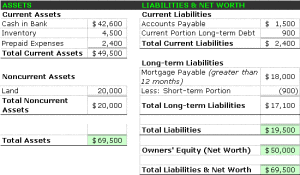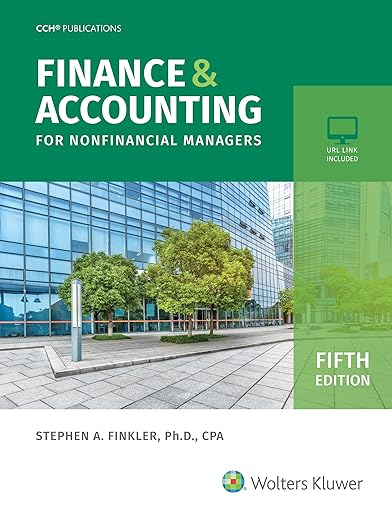Understanding financial statements (Balance Sheet)

To be able to identify solid companies, an investor needs, among other things, to have knowledge of three financial statements: the balance sheet, the income statement and the statement of cash flows.
This post looks at what a balance sheet is.
The balance sheet, which is like a credit report, has three segments: a company’s assets, its liabilities and its shareholders’ equity at a specific point in time. Notice that the balance sheet is a snapshot of these segments at a specific point of time (it can be at the end of a financial year or the end of a financial quarter). That’s why a balance sheet is sometimes referred to as a statement of financial position. The three balance sheet segments tell us what the company owns (assets) and owes (liabilities) and the amount invested by its shareholders (equity).
This is the balancing formula:
Assets = Liabilities + Shareholders’ Equity
Assets consist of current assets (those that are likely to be used up or converted into cash within one year or one business cycle) and non-current assets (those that are not likely to be used up or converted into cash within one year or one business cycle).
Likewise, liabilities comprise current liabilities (money that the firm owes and expects to pay out within one year) and non-current liabilities (money the firm owes but which is not due for payment within a year).
As said earlier, a balance sheet must balance, hence:
Assets = Liabilities + Shareholders’ Equity
Alternatively, the formula can be:
Assets – Liabilities = Shareholders’ Equity
Let’s put in some numbers to understand the equation better.
Assume a firm has assets of $200m, liabilities of $40m and equity of $160m.
Thus $200m (assets) = $40m (liabilities) + $160m (equity).
Remember assets are what the firm owns, liabilities are what it owes and equity is what the shareholders put in.
If the firm decides to issue $20m in bonds, its liabilities will go up by $20m, bringing total liabilities to $60m. This in turn raises the assets of the firm by $20m, bringing total assets to $220m.
The equation thus becomes: $220m (assets) = $60m (liabilities) + $160m (equity).
Assuming the firm decides to issue new shares to raise $30m. Equity thus becomes $190m and assets become $250m.
The equation now reads: $250m (assets) = $60m (liabilities) + $190m.
Got it?
Earlier on, we said that assets comprise current assets and non-current assets and that liabilities consist of current liabilities and non-current liabilities. To recapitulate, current assets are those likely to be used up or converted into cash within one year and current liabilities are money the firm expects to pay out within a year.
Let’s now look at examples of the assets and liabilities.
Examples of current assets: (a) cash and equivalents and short-term investments (b) accounts receivable (c) inventories.
Examples of non-current assets: (a) property, plant and equipment (b) investments (c) intangible assets.
Examples of current liabilities: (a) accounts payable (b) short-term borrowings.
Examples of non-current liabilities: long-term debt, such as bonds and bank loans.
Examples of equity: (a) money raised from the issue of new shares (b) retained earnings.
Now let’s examine the components of the abovementioned examples to understand what they are.
(a) Cash and equivalents and short-term investments: Cash itself needs no explanation. The cash equivalents refer to money market funds or anyting that can be easily liquidated and turned into cash. Examples of short-term investments are bonds that have less than a year to maturity.
(b) Accounts receivable: This is money owed to the company resulting from a sale and which the firm is expecting to receive payment soon. Let’s illustrate. When a company makes a sale and ships the goods ordered, it records the amount of sale as revenue in its profit and loss statement (more about profit and loss statement in subsequent postings) .Let’s say the order is $2 million. The recorded revenue is $2 million. But the sale does not mean that the company now has $2 million in cash in its hands. The company may allow the customer to pay the money within 60 days. So until the bill is collected, the amount of $2 million remains an accounts receivable. There is a potential red flag here: if the accounts receivable is growing much faster than the firm’s sales, it may mean the company is more easy going on credit terms for customers in order to boost its revenue. The risk of payment default is higher in such a case.
(c) Inventories: raw materials, partial finished products and finished products.
(d) Property, plant and equipment: land,buildings, factories, furniture, equipment and the like. These are long-term assets that a firm needs to run a business.
(e) Intangible assets: normally refers to goodwill. How does this come about? Let’s say firm ABC is acquiring full control of XYZ. The tangible value of XYZ is say $80m. But because XYZ is well-known as a brand, ABC is prepared to pay above the tangible value. Let’s say ABC pays $130m to acquire XYZ. The difference between $130m and $80m is the intangible assets – known as goodwill in this case – of $50m.
(f) Accounts payable: This is the reverse of accounts receivable. Accounts payable are bills the firm owes others and are expected to be paid up within a year. Let’s say the firm buys $20,000 worth of raw materials and the supplier gives the firm a credit period of 60 days to pay up. This bill of $20,000 will be recorded as accounts payable.
(g) Short-term borrowings: A firm may have short-term needs and borrow money with repayment expected to be made within a year. The borrowing could be in the form of a bank overdraft. Short-term borrowings could be a portion of a long-term debt that is due for repayment within a year.
(h) Long-term debts: this is money the firm owes and where repayment is expected after at least one year. The debt can be in the form of bonds issued by the company or it can be long-term borrowing from banks.
Recommended reading:
(2) Finance & Accounting For Nonfinancial Managers By Stephen A. Finkler
